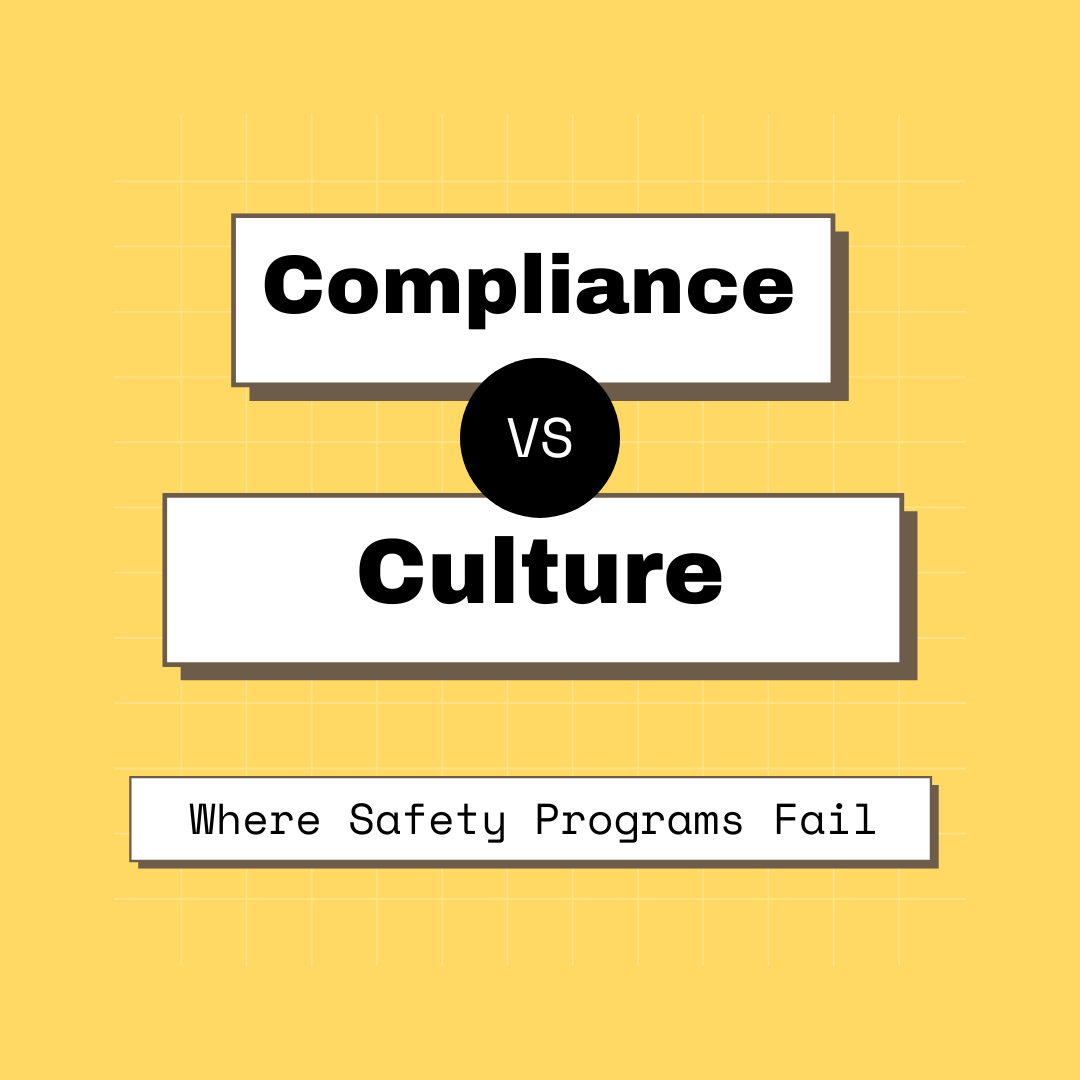Compliance vs. Culture: Where Safety Programs Fail
When a workplace incident happens, the first question many leaders ask is: “Did we follow the rules?” But if the answer is yes and someone still got hurt, that’s a sign your safety program might be compliant on paper but failing in practice.
The difference often comes down to one word: culture.
The Problem with Compliance-Only Safety Programs
A compliance-focused safety program does what’s required to meet OSHA standards or pass an audit. That means the right policies exist, the necessary training is scheduled, and forms are filled out.
These programs often look great on paper but that’s the issue. They tend to stop at checking boxes:
Training is rushed or generic
Policies are long, hard to follow, or not enforced
Inspections happen, but findings are rarely addressed
Reporting systems exist, but employees don’t feel safe using them
In short, everyone “does safety” because they have to, not because they believe in it. That’s a risky place to be.
What Safety Culture Really Means
Culture is the difference between knowing the rules and caring about them. A strong safety culture means:
People speak up when they see something wrong even if it’s uncomfortable
Leaders model safe behavior, even when no one’s watching
Training connects to real-world tasks and is taken seriously
Workers believe management values their safety over speed or profit
Near-misses are reported and used as learning opportunities, not blame
Culture is about values, habits, and trust. When safety is part of the culture, it becomes how people work not an extra thing to remember.
Real-World Warning Signs of a Culture Problem
Even programs that seem compliant on the surface can have deep cultural issues. Watch for these red flags:
"We’ve always done it this way." This mindset resists change even when hazards are clear.
Underreporting. A suspiciously low number of incidents or near-misses can mean people are afraid to report.
Leadership distance. If managers only show up after something goes wrong, employees lose trust.
Blame after incidents. If the focus is on “who messed up” instead of “how do we fix it,” you’ve got a problem.
Safety seen as an obstacle. When employees feel pressure to cut corners, safety is no longer a priority.
Bridging the Gap: From Compliance to Culture
So, how do you shift from just following the rules to truly building a safety culture?
Lead by Example
If supervisors or executives don’t wear PPE, skip checklists, or downplay training, the message is clear: safety is optional. Culture starts with what leaders do not just what they say.Make Reporting Safe and Encouraged
Employees need to know they won’t be punished or ignored for speaking up. Celebrate near-miss reports and use them to improve, not reprimand.Involve Workers in Safety Solutions
Ask for their ideas on how to improve tasks or equipment. Use their input in walkthroughs and policy updates. When employees help build the program, they’re more invested in it.Focus on Learning, Not Blame
After incidents, shift from “who did this?” to “how did this happen, and how can we prevent it?” This mindset builds trust and drives real improvement.Tie Safety to Performance, Not Paperwork
Measure safety in terms of behavior, engagement, and outcomes not just checklists and completion rates. Give recognition for safe practices, not just low incident numbers.
Conclusion: A Culture of Safety Outlasts a Checklist
Compliance is necessary but it’s not enough. A workplace that only focuses on passing audits may meet the legal standard, but still fail its people.
If you want a safety program that truly protects your team, you need to move beyond policies and forms. You need a culture one where safety is lived every day, at every level.
At Nano Safety & Security, we help companies build safety cultures that go deeper than compliance. If your safety program feels like it's stuck in checklist mode, we can help you turn it into something real, lasting, and effective.


